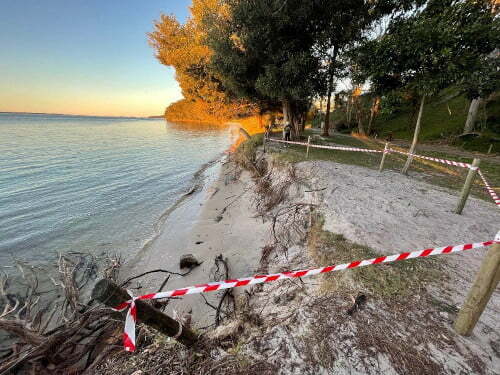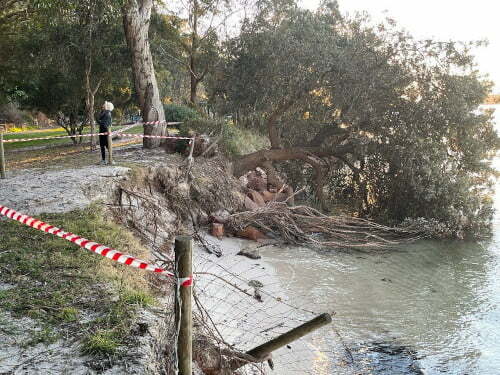The future of our beaches: erosion and artificial reefs
By Iain Watt, Marine Scientist and President, EcoNetwork.

The iconic beaches of Port Stephens have taken a hammering this year, from Birubi to Dutchies and beyond. This is a long-term problem that will ultimately impact the local economy. We need to start looking after the natural assets that are Incredible by Nature and that underpin the local tourism industry.
This problem is not going to fix itself. Given the escalating impacts of climate change with increased frequency and intensity of storms on shoreline stability, it can only get worse. Perhaps it is time to consider alternatives to the business as usual approach to erosion.
Constructing rip rap rock walls, or geotextile sandbagging and beach nourishment have not proven to provide a sustainable long-term solution.
Planting native shoreline plants is one solution, but is site-specific and usually too little too late. The removal of native plants on the foreshore reserve in favour of buffalo grass is poor practice. Regular watering results in soil and nutrient runoff, while the shallow roots of introduced grasses do not stabilise the shore. Surprisingly, the Council does nothing about this, despite it being their land.
Rip rap rock walls, may be useful for protecting shoreline infrastructure, they preclude the return of beaches to an area and the erosion problem is transferred along the shoreline. It becomes a game of whack-a-mole until the entire coastline is built up with rock walls – not a good look for future tourism.

Geotextile sandbags (e.g. Nelson Bay beach) are generally considered to be a temporary measure while a more permanent solution is developed. These are often used in conjunction with beach nourishment, introducing additional sand to the beach as a long-term solution. But if wave attenuation (direction and strength) is not addressed, the wave action that promulgated the problem will continue.
Wave action is the primary driver of beach erosion. This comes in two forms: refraction, the change in direction, wavelength, and speed of the waves due to a change in water depth, and diffraction, where the waves bend around an obstacle(s).
Changing the angle, speed, and wavelength of approaching waves can drastically improve beach stability. Introducing wide crested, submerged artificial reefs provides shoreline stability by mimicking the function of natural offshore reefs. These absorb and deflect wave energy, protecting the beaches from powerful damaging wave action.
Importantly, nearshore artificial reefs also provide ecological benefits such as new habitat for fish and social benefits including new recreational fishing and snorkel sites.
The economics of beach erosion mitigation is the balance between mitigation costs against the perceived values that a beach provides economically, ecologically, and socially. But whatever solution is selected should be cost-effective and sustainable over the long term.

Experience from Byron Bay Shire provides some insight to the costing of artificial reefs. A seawall at Belongil was estimated at $15 million in 2016. The artificial reef completed in 2019, at Palm Beach, Byron Bay Shire, cost $18.2 million, providing additional long-term ecological sustainability and social benefits.
DPI has successfully deployed artificial reefs at 6 estuarine sites across NSW, providing new recreational fishing grounds. Combined with the success of the Port Stephens oyster reef restoration project and documented international successes, creating artificial reefs with the dual function of mitigating beach erosion while providing social benefits such as new recreational fishing and snorkelling sites should be encouraged.
Ultimately, beach erosion management will require a variety of solutions for different sites, but offshore artificial reefs should be included in the equation.
